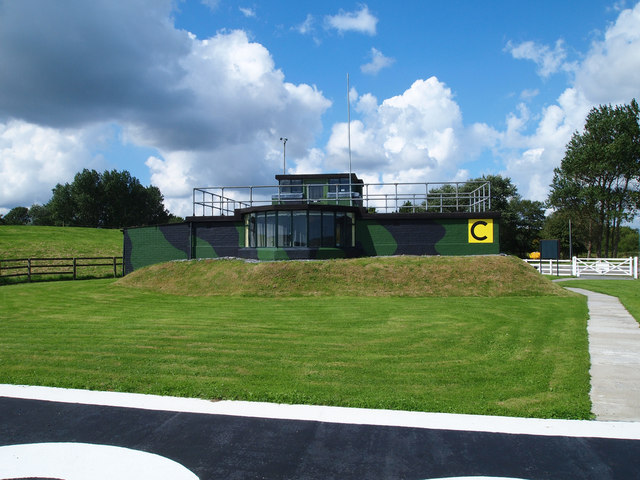Carew Control Tower
Introduction
The photograph on this page of Carew Control Tower by Scott Lewis as part of the Geograph project.
The Geograph project started in 2005 with the aim of publishing, organising and preserving representative images for every square kilometre of Great Britain, Ireland and the Isle of Man.
There are currently over 7.5m images from over 14,400 individuals and you can help contribute to the project by visiting https://www.geograph.org.uk

Image: © Scott Lewis Taken: 27 Aug 2010
It was in 1938 that construction started on the new airfield situated on the site of the First World War Royal Naval Air Station. The first unit to arrive was 'B' Flight of Number 1 Anti Aircraft Co-operation Unit arriving in April 1939 with its Hawker Henley aircraft. This unit spent the duration of the war at Carew towing targets for the gunnery schools at Manorbier, Aberporth and Towyn. Under the control of Coastal Command, the first of many squadrons to use the airfield commenced operational sorties in the summer of 1939. The Avro Ansons of 217 squadron carried out patrols over the coastal waters on the day war was declared. Blenheims and Beaufighters of 236, 248, 254 and 500 squadrons over the next two and half years were engaged on patrol flights over the Western Approaches and Irish Sea. Reconnaissance sorties and bombing raids were also carried out on targets along the French coast. During this period two Dutch squadrons 320 and 321 equipped with Ansons and the American Lockheed Hudsons also help with these duties. This period of frantic activity was to see the Coastal Command Development Unit spent a year based at the airfield testing and perfecting new systems for use in the war against the 'U' boats. One of the scientists and pilot of the unit's Whitley aircraft was Michael Weizmann whose father was the first President of Israel. Carew Cheriton attracted the attention of the German Luftwaffe with a number of air raids on the airfield between July 1940 and April 1941. On October 1st, 1940 a hangar and a number of buildings were totally destroyed together with two Avro Ansons in an early morning raid. This attack claimed the life of AC2 John Greenhalgh. A more serious raid took place on April 15th, 1941 when the sick bay sustained a direct hit killing twelve airmen. The airfield transferred to Technical Training Command in October 1942, and the newly formed No. 10 Radio School started its training programme. Hundreds of wireless operators were trained on the unit's Oxford and Anson aircraft. The five-week course prepared wireless operators for postings to operational squadrons. The good safety record of the unit was marred on September 3rd, 1943 when two Oxford aircraft collided on the intersection of the two runways killing six aircrew. The training continued until the unit disbanded in November 1945, and shortly afterwards the airfield closed. For the historian, a large percentage of the airfield remains and is a wonderful time capsule of this period of history. The control tower is the subject of a community project, and has been totally restored.

